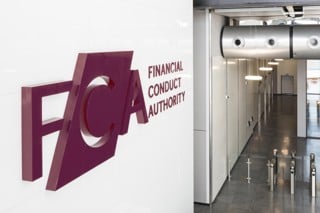AM: What was the average loan rate previously?
SH: Our current average is 9.5%.
Because we’ve taken the fees out, that’s really a very competitive loan now. If you went back a few years ago, prior to the recession, it would be quite normal for rates to be in the mid to high teens, but if we went back to the 1990s, they’d have been in the 20s.
But even today, particularly on the lower balance loans, we see high teen APRs.
So you can imagine, if a dealer is lending a customer £5,000, particularly with fees in it, and his expectation is for a minimum level of commission, he might charge a flat rate of 10%, because the difference it makes to the customer’s monthly payment over three years is quite minimal, but the difference it makes to his commission is significant.
We’ve stopped that from happening - it cannot happen.
Even on a low-balance loan now, they cannot go over 10.9%, and it doesn’t matter whether it’s a new car or a used car; it doesn’t matter whether it’s a six-month old car, or a 10-year old car; it doesn’t matter whether it’s on Select or on HP, the customer will never pay more than that, and the dealer earns exactly the same commission, if he sells the same rate, regardless of all those variables.
That for us is particularly important, because it’s absolutely critical that the dealer sells the right product to the customer - the product that suits their needs.
Now that sounds like a compliance issue, but it’s not, it’s actually about good customer management. It’s about offering the customer the right product for them, the thing that suits them, not selling the product that makes them the most money, or the product that’s on the lowest rate, therefore it’s the easiest to sell. So we’ve put the same offering across everything, so that the dealer has absolutely no motivation to do anything other than find out what really suits the customer.
AM: Isn’t it going to impact the dealer’s profitability?
SH: Yes. This is a bold move on our part. We have, in our network, a lot of very visionary and very customer-centric owners and proprietors, and a lot of them are very happy to move in this direction because they think it’s the right thing to do for all the reasons we do. But we do have within our network a number of dealers that are more focused on the fact that capping the rates will have an adverse effect on their profitability, so we will lose support in the short term, as a result of this.
But because this is a principle-based approach, we can’t moderate our principles. It’s business-driven. It’s often the case that doing the right thing for the customer will bear fruit in the longer term, and in the medium term, you have to take a bit of pain.
AM: So the volume of deals should go up, because it’s more attractive?
SH: That’s our argument.
AM: This could be a positive. While you make less money per deal, the volume of deals goes up, more than making up for the per deal reduction in margin?
SH: Yes. Traditionally, the biggest dealers, the ones with the highest volume, have the best packages. They earn the most, and the smallest dealers, the ones with less volume, earn least. What we’ve done is put one package across them all, so inevitably, it means the smaller dealers that have arguably performed extremely well in terms of customer experience, because they know their customers well, have had an improved set of circumstances, and bigger dealers are the ones that are most hard-hit.
I’ve been fortunate in being able to convince the majority of them that it’s the right thing to do, but not all of them unfortunately.
AM: Do you see your decision being copied by other brands, finance providers or dealers themselves?
SH: Yes, I think it will. We’re experiencing a painful transitional phase. But because we are a successful company at the top of our game, we feel confident in our actions.
Other lenders and other dealers out there feel a little bit less secure, and therefore they’re more afraid to make that change now, but I think they will make the change eventually.
25 out of the 53 dealers went live on October 1 with the new 10.9% capped rate with the rest live from January 1.
The results for dealers who have embraced this have improved. They are selling more finance, and actually their profitability hasn’t gone backwards. They now feel confident enough to be open and transparent about what they’re selling, and so customers don’t mind paying the rates, because up to 10.9’s a fairly decent rate.
Consequently, where they might have been afraid before to offer 9.9%, and did the deal at 5.9 or 6.9, they’re now actually able to up the rates a little bit, and while having to reduce the higher rates they would have done business on, have ended up with a whole host of happy customers. Retention should improve, although it’s too early to really gauge the effect with actual statistics.





















Steve Boucher - 05/12/2014 17:03
It's interesting to see that the new BMW Finance advertised rate of 10.9% is higher than the average rate BMW dealers have been charging - could someone explain how this is putting customers first? I appreciate that dealers can discount down the rate, but if you are 'treating customers fairly', shouldn't you be offering all of your customers the lowest discounted rate?